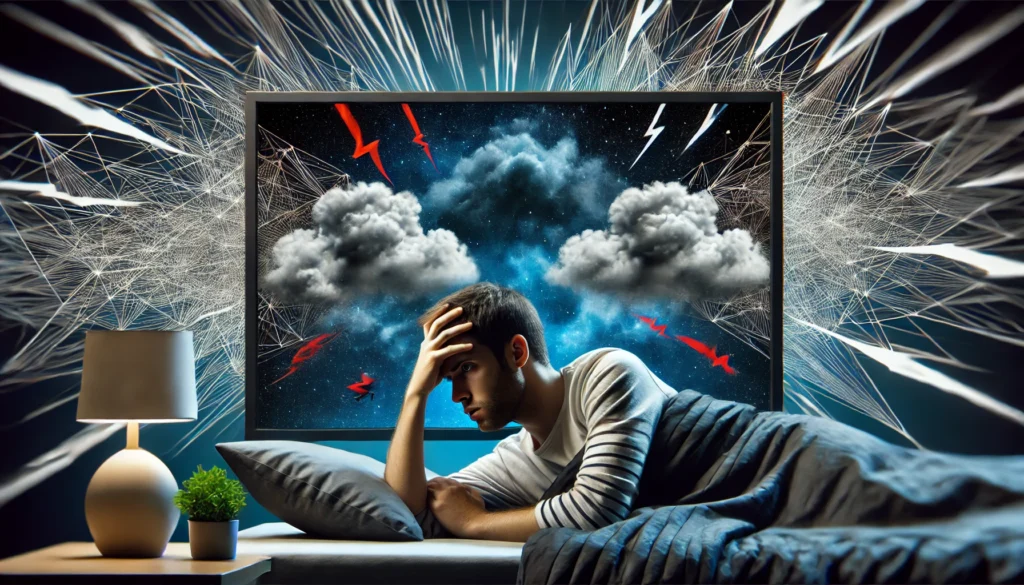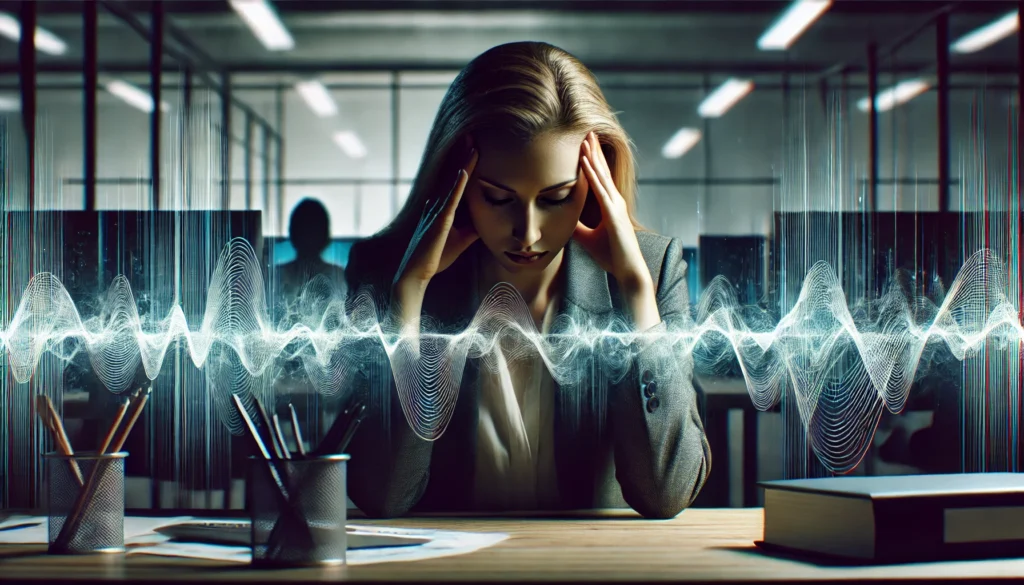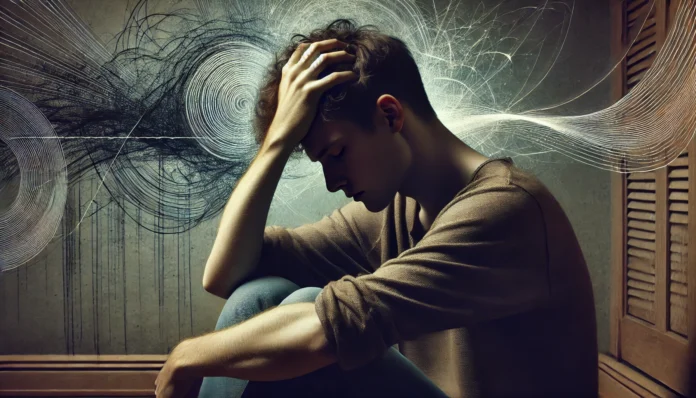Introduction: Exploring the Hidden Connection Between Mental and Physical Pain
In the labyrinth of human health, the divide between mind and body is more illusion than reality. The delicate interplay between psychological stressors and physical symptoms has long fascinated researchers and clinicians alike. One such intersection lies in the growing recognition of how mental health conditions, particularly anxiety and depression, can manifest in tangible bodily discomforts. Among these, head pain stands out as both a commonly reported symptom and one that remains frustratingly elusive in terms of precise cause. The question “can anxiety cause headaches or migraines?” surfaces repeatedly among patients and healthcare professionals, reflecting a broader search for understanding within both medical literature and everyday experience.
You may also like: Proven Relaxation Techniques for Stress and Anxiety: Evidence-Based Strategies to Calm Your Mind and Body
This question is not merely academic. For the millions of individuals living with chronic anxiety, the frequent and often unpredictable onset of headaches or migraines can be debilitating. These headaches are not isolated events—they intersect with emotional states, disrupt daily life, and often create a feedback loop where anxiety causes pain, which in turn heightens anxiety. Understanding this cycle is essential not only for proper diagnosis and treatment but also for reshaping how we think about mental health’s impact on physical well-being.
The prevalence of anxiety disorders in modern society is staggering. According to data from the Anxiety and Depression Association of America, over 40 million adults in the United States alone are affected by anxiety annually. Many of these individuals report recurring physical symptoms, particularly tension-type headaches and migraines. Despite this, the pathways linking emotional stress and head pain remain under-discussed outside of clinical settings. Integrating the psychological, neurological, and physiological dimensions of this issue is critical for both medical professionals and those experiencing these symptoms firsthand.
This article delves deeply into the intricate relationship between anxiety, depression, and various forms of head pain—including migraines, tension headaches, and cluster headaches. It explores how emotional stressors can activate neurological pathways that result in head pain, and vice versa. We will examine not just the science behind these connections, but also practical strategies for management, prevention, and treatment. In doing so, we aim to shed light on a phenomenon that, while common, is too often misunderstood or dismissed. With a commitment to scientific accuracy, mental health advocacy, and compassionate storytelling, we seek to answer the core question: can anxiety cause headaches or migraines—and if so, what can be done to help?
Understanding Anxiety and Its Physical Manifestations
To understand how anxiety could contribute to headaches, it’s essential to grasp what anxiety is on both a psychological and physiological level. Anxiety is more than just a fleeting feeling of worry or fear. It is a complex, multifaceted mental health condition that involves persistent, excessive nervousness, apprehension, and physiological arousal. While anxiety can serve an adaptive purpose by preparing us to respond to perceived threats, chronic anxiety reflects a state of prolonged psychological distress that significantly impacts physical health.
Physiologically, anxiety triggers the body’s fight-or-flight response, an ancient evolutionary mechanism governed by the autonomic nervous system. When a person perceives danger—whether real or imagined—the brain signals the adrenal glands to release stress hormones, such as adrenaline and cortisol. These hormones flood the body with energy, increase heart rate, heighten sensory awareness, and tighten muscles, preparing the body to either confront or flee from the perceived threat. While this response is helpful in acute situations, when it becomes chronic, it can wear down the body in numerous ways.
One of the most notable ways anxiety affects the body is through muscle tension, particularly in the neck, shoulders, and scalp. This tension can lead directly to tension-type headaches, a common form of head pain characterized by a dull, aching sensation often described as a tight band around the head. Moreover, anxiety can alter breathing patterns, increase sensitivity to pain, and even influence vascular changes—all of which can contribute to the onset of migraines or other forms of head pain. Thus, the physical manifestations of anxiety are not separate from its psychological components; they are deeply interwoven.
Adding another layer of complexity, individuals experiencing anxiety often become hypervigilant about physical sensations—a phenomenon known as somatic amplification. In this state, even mild discomforts can be perceived as intensely painful or distressing, creating a feedback loop where anxiety heightens awareness of pain, which in turn increases anxiety. This is particularly relevant when considering whether anxiety headache episodes might reflect not just physical tension, but also cognitive patterns of catastrophizing or fear.
Importantly, these physiological responses are not merely hypothetical or anecdotal—they are supported by extensive neuroscientific research. Functional MRI scans, for instance, have shown that the brains of individuals with anxiety disorders display increased activity in regions associated with pain perception, such as the anterior cingulate cortex and the insula. These findings reinforce the idea that the mind’s response to emotional stress can directly influence the body’s experience of pain. Therefore, when considering whether anxiety can cause headaches, the answer lies in this neurobiological interconnectedness: emotional distress does not simply coexist with physical pain—it can actively create it.
Excellent — we’ll now continue with the next part of the article. Below is the continuation, seamlessly following the previously developed sections and maintaining the same narrative depth, SEO integration, and stylistic cohesion.
The Neurological Link Between Anxiety and Head Pain
Understanding how anxiety contributes to headaches or migraines requires an exploration of the intricate neurological systems involved in both emotional regulation and pain processing. These two domains—mental health and physical sensation—are inextricably connected through the central nervous system, particularly the brain’s pain matrix. This matrix includes several key areas: the prefrontal cortex, anterior cingulate cortex, amygdala, thalamus, and periaqueductal gray. Each of these regions plays a critical role in processing stress, fear, and pain, forming a dynamic feedback loop that often explains why individuals suffering from anxiety frequently experience recurrent or chronic head pain.
The amygdala, the brain’s emotional alarm system, becomes hyperactive during periods of anxiety. This hyperactivity can trigger a cascade of neurochemical events, including the excessive release of norepinephrine and cortisol. Over time, chronic activation of this stress pathway can lead to a state of neuroinflammation, which is increasingly recognized as a contributing factor to the development of migraines. In fact, some researchers suggest that inflammation within the trigeminovascular system—closely linked to migraine pathophysiology—may be exacerbated by chronic stress and anxiety.
Additionally, the hypothalamic-pituitary-adrenal (HPA) axis, which governs the body’s long-term stress response, plays a pivotal role in regulating hormones and neurotransmitters that influence both mood and pain. Dysregulation of this axis is common in individuals with anxiety disorders and can lead to abnormal cortisol levels. Since cortisol influences blood vessel tone, neurotransmitter release, and immune function, this hormonal imbalance may further contribute to vascular changes involved in migraines or the muscular tightness seen in tension-type headaches.
One fascinating discovery in this area involves the concept of central sensitization. In this state, the nervous system becomes hyper-responsive to stimuli, even those that are not typically painful. Individuals with central sensitization report heightened sensitivity to touch, light, sound, and other environmental factors—features that are also characteristic of migraine episodes. Anxiety can serve as both a trigger and a perpetuator of this sensitized state, creating a vicious cycle where the body’s pain threshold decreases over time. As a result, the connection between anxiety and headaches is not just about temporary tension—it is about a rewiring of the nervous system that makes pain more likely, more intense, and more persistent.
Furthermore, neurotransmitters such as serotonin and dopamine—which regulate both mood and pain—often become dysregulated in people living with anxiety disorders. Low levels of serotonin, for instance, are a well-documented trigger for migraines, and this neurotransmitter also plays a role in regulating how the brain interprets pain signals. Medications that increase serotonin levels, such as selective serotonin reuptake inhibitors (SSRIs), are frequently prescribed to treat both depression and chronic headaches, reinforcing the overlap in these biological systems.
Ultimately, these neurological insights provide a clear answer to questions like “can anxiety cause headaches” or “can anxiety cause migraines?” Not only can it—it often does, through multiple overlapping mechanisms that involve brain chemistry, neuroinflammation, hormonal imbalance, and increased pain sensitivity. This complex web of interactions underscores the need for an integrative treatment approach that addresses both the emotional and neurological components of head pain.
Can Depression Cause Headaches? Unpacking the Comorbidity of Mood Disorders and Head Pain
While anxiety is often spotlighted in discussions of stress-related headaches, depression also plays a significant and often underrecognized role. The question “can depression cause headaches?” warrants serious attention, especially given the high rates of comorbidity between depressive disorders and chronic pain conditions. Depression does not simply coexist with pain—it can amplify it, prolong it, and fundamentally alter the body’s perception of discomfort. This relationship is not merely psychological; it is deeply physiological, rooted in shared neurochemical and neuroanatomical pathways.
One of the central features of depression is an alteration in neurotransmitter balance, particularly involving serotonin, norepinephrine, and dopamine. As with anxiety, deficits in these chemicals not only affect mood but also directly influence pain processing. Serotonin, in particular, is critical in modulating the experience of both physical and emotional pain. Low levels are associated with increased vulnerability to both migraines and tension-type headaches. This biochemical overlap may explain why many individuals with depression experience what are often termed “depression headaches,” which tend to present as persistent, dull aches that are resistant to common painkillers.
The impact of depression on sleep patterns, appetite, and energy levels also contributes to the development and persistence of head pain. Poor sleep—especially fragmented or shallow sleep—reduces the brain’s ability to regulate pain signals. Inadequate restorative sleep is a well-established trigger for migraines and tension headaches alike, and it is a hallmark symptom of major depressive disorder. Meanwhile, appetite disruptions can lead to low blood sugar, dehydration, and nutritional deficiencies, all of which can independently contribute to headaches. When combined with the emotional toll of depression, these factors create a multifaceted syndrome where pain becomes deeply embedded in the person’s daily experience.
Another important concept in this context is psychomotor retardation, a slowing of physical and cognitive function frequently seen in major depression. This sluggishness often leads to physical inactivity, which in turn may exacerbate musculoskeletal tension and vascular dysregulation—both known contributors to head pain. The more sedentary a person becomes, the more likely they are to develop the physical stiffness and poor posture that can trigger tension headaches. Moreover, the withdrawal from social engagement and routine activities can isolate the individual further, increasing their focus on physical symptoms and reducing their access to coping resources.
The social and emotional isolation that often accompanies depression also affects how pain is experienced and interpreted. Research has shown that people with depression tend to have lower pain thresholds and higher levels of perceived pain. This phenomenon may be related to changes in brain regions responsible for emotional regulation and pain inhibition, such as the prefrontal cortex and the anterior cingulate cortex. The brain, in a state of depressive dysfunction, simply becomes less efficient at managing distress—be it emotional or physical.
Thus, the answer to the question “can depression cause headaches?” is an emphatic yes, supported by both clinical observation and scientific research. Depression and headaches are not merely co-travelers; they are interdependent conditions that often amplify each other. For those experiencing both, addressing only one component is rarely sufficient. Treatment must be holistic, integrating antidepressant therapies with behavioral interventions, physical health monitoring, and lifestyle adjustments to create meaningful and lasting relief.

The Role of Stress and Hormonal Changes in Triggering Head Pain
Beyond anxiety and depression, stress itself stands as one of the most powerful contributors to headache and migraine development. Stress is not simply a psychological state—it is a whole-body response that engages the endocrine, cardiovascular, immune, and nervous systems in ways that can profoundly affect head pain. When we ask questions like “can stress and anxiety cause headaches,” we must understand that stress acts as both a trigger and an amplifier, particularly when combined with underlying mood disorders.
Acute stress initiates a surge in cortisol and adrenaline, which constrict blood vessels and alter pain thresholds. These changes can trigger immediate head pain, especially in those already prone to migraines or tension headaches. However, it is chronic stress—the kind that persists day after day—that wreaks the most havoc. Over time, the constant activation of the stress response can lead to adrenal fatigue, cortisol dysregulation, and a hypersensitive nervous system. This sensitized state makes the brain more reactive to both external and internal stimuli, increasing the likelihood of headaches with even minor stressors.
Hormonal changes, particularly those involving estrogen and progesterone, also play a significant role in head pain, especially among individuals assigned female at birth. Fluctuations in hormone levels throughout the menstrual cycle can exacerbate both anxiety and migraines. For instance, the drop in estrogen levels just before menstruation is a well-known migraine trigger and can also contribute to mood instability. Many people report a combination of mood symptoms and head pain during these times, reflecting the tight hormonal-psychological coupling that characterizes conditions like premenstrual dysphoric disorder (PMDD).
Pregnancy, menopause, and the use of hormonal birth control can also influence the frequency and severity of headaches. In some cases, hormone-related migraines may improve during pregnancy when estrogen levels stabilize; in others, they may worsen postpartum when hormonal fluctuations are most dramatic. Anxiety and depression can interact with these hormonal shifts, creating a perfect storm of neurological and emotional dysregulation. It’s in these complex interactions that questions like “will anxiety cause headaches” take on new meaning—because the answer often depends on a constellation of intersecting biological, psychological, and environmental factors.
Sleep disruption, another byproduct of chronic stress and mood disorders, further compounds the problem. A lack of consistent, high-quality sleep impairs the brain’s glymphatic system, which is responsible for clearing metabolic waste. Accumulation of waste products, including inflammatory molecules, may contribute to increased head pain. Sleep also plays a key role in regulating hormones, immune responses, and emotional resilience, meaning that stress-related insomnia can trigger or worsen headaches in multiple ways.

Frequently Asked Questions: Anxiety, Headaches, and Migraines
1. How can anxiety lead to recurring headaches even when I don’t feel stressed?
It’s entirely possible to experience what’s commonly called an anxiety headache even if you don’t consciously feel anxious. Chronic anxiety often manifests beneath conscious awareness, activating the body’s stress response on a near-continuous basis. This low-grade, persistent arousal can tighten muscles in the neck and scalp, constrict blood vessels, and alter neurological activity—all of which contribute to head pain and anxiety symptoms that persist even in the absence of identifiable stress. Many individuals become so used to their anxiety baseline that they no longer recognize it as abnormal, making them more vulnerable to persistent head pain. Recognizing that anxiety can be a silent contributor to physical discomfort is crucial for seeking appropriate treatment.
2. What makes anxiety-induced headaches different from migraines?
Although both can be triggered by emotional stress, anxiety-induced headaches typically present as tension headaches, marked by a dull, squeezing sensation across the forehead or back of the head. Migraines, by contrast, often include throbbing pain on one side, sensitivity to light and sound, nausea, and sometimes visual auras. That said, chronic anxiety can evolve to a point where it contributes to both forms of head pain. The phrase “can anxiety cause migraines” becomes especially relevant here, as research indicates that long-term anxiety can increase the frequency and intensity of migraines by sensitizing the nervous system. Understanding these nuances helps in targeting treatment more precisely.
3. Why do I experience a headache after a panic attack, even if the episode is brief?
A headache after panic attack episodes can result from a range of physiological disruptions. During a panic attack, rapid breathing can lead to hyperventilation, causing blood vessels in the brain to constrict. Additionally, muscle tension in the jaw, neck, and shoulders spikes dramatically, and stress hormones surge, all of which can lead to or worsen head pain. These headaches may feel like a lingering echo of the panic episode, lasting for hours even after the immediate anxiety subsides. Managing the frequency and severity of panic attacks may, in turn, reduce the number of post-attack headaches.
4. Can depression cause headaches even if I don’t have other physical symptoms?
Yes, depression can cause headaches independently of other somatic complaints. The relationship between depression and pain is often mediated by changes in neurotransmitter levels, particularly serotonin and norepinephrine. These same chemicals play a role in mood regulation and pain perception, which explains why many people experience what are commonly referred to as depression headaches. Even in the absence of fatigue or appetite changes, alterations in brain chemistry can amplify sensitivity to pain. If you’re experiencing persistent headaches with low mood, it’s essential to evaluate both physical and emotional health together.
5. Is it normal to feel more head pain during life transitions or after trauma?
Absolutely. Significant life transitions and traumatic experiences can heighten the body’s stress response, leading to chronic muscle tension and vascular changes that contribute to head pain. In this context, the question “does anxiety cause headaches” becomes particularly important, as acute stressors often ignite latent anxiety that manifests physically. Individuals who have undergone trauma may also experience hypervigilance, which can further intensify bodily discomfort. If headaches worsen during emotionally turbulent times, it’s often a sign that deeper psychological factors need to be addressed.
6. Why does my head pain worsen even when I try to relax or meditate?
For individuals with anxiety, relaxation can paradoxically increase discomfort—a phenomenon known as relaxation-induced anxiety. When you slow down, your brain may become more aware of bodily sensations, including those associated with head pain and anxiety. This heightened awareness can make existing tension or discomfort feel more pronounced, sometimes triggering an anxiety headache. Additionally, if you associate relaxation with a loss of control, your nervous system may remain on alert, undermining the calming effects of meditation. Working with a therapist who specializes in somatic or mindfulness-based approaches can help retrain your nervous system to respond differently.
7. How do sleep patterns influence anxiety-related headaches or migraines?
Sleep quality plays a significant role in both managing anxiety and preventing head pain. Disrupted sleep reduces your brain’s ability to regulate stress hormones and pain sensitivity, making it more likely that anxiety headache or migraine episodes will occur. The question of whether stress and anxiety cause headaches is often linked to sleep as a mediating factor. Sleep deprivation impairs neuroplasticity and can lower the threshold for both physical and emotional pain. Creating consistent sleep routines and addressing underlying sleep disorders like insomnia or sleep apnea can significantly reduce head pain.
8. Can lifestyle choices help reduce head pain caused by stress and anxiety?
Yes, and the impact can be profound. Regular physical activity helps lower baseline cortisol levels and increases endorphins, which serve as natural painkillers. Likewise, reducing caffeine, alcohol, and processed foods can help stabilize mood and vascular function, both of which are relevant for preventing tension headache anxiety patterns. Even hydration levels matter—dehydration can exacerbate both anxiety symptoms and headaches. If you’re asking whether stress and anxiety cause headaches in your life, evaluating your daily habits may offer valuable insights into reducing frequency and severity.
9. Are there long-term consequences of untreated anxiety-related head pain?
Ignoring persistent anxiety headache episodes can lead to what is known as chronification, where episodic pain becomes a daily condition. This not only makes future treatment more difficult but also increases the risk of developing associated disorders like depression or chronic migraine. When head pain and anxiety are both left unaddressed, they can reinforce one another in a downward spiral that affects quality of life, sleep, cognition, and even cardiovascular health. Early intervention is crucial to breaking this cycle and preventing escalation into more severe conditions. Mental and physical pain should never be seen as separate silos.
10. How can I talk to my doctor about head pain without it being dismissed as ‘just anxiety’?
Start by keeping a detailed symptom journal that tracks your head pain, mood, sleep, and daily stressors. This will help illustrate patterns that connect anxiety with headaches or migraines in a concrete way. When discussing symptoms, use specific phrases such as “I’m concerned about how my anxiety affects my head pain” or “I’ve noticed more frequent headaches during high-stress periods.” Bringing up research-based terms like tension headache anxiety or depression headaches may also signal that you’ve done your homework. Remember, comprehensive care often requires a collaborative approach that addresses both psychological and physical components of health.

Thus, the relationship between stress, anxiety, hormonal fluctuations, and head pain is far from linear. It is dynamic, multifactorial, and highly individualized. The question “can stress and anxiety cause headaches” doesn’t just invite a yes or no—it demands a nuanced understanding of how these forces interact within the body and mind. Only with this complexity in mind can treatment strategies be tailored effectively.
stress-related head pain, mental health and physical symptoms, neurological effects of anxiety, chronic stress and health, psychosomatic pain, headache triggers in mental health, neuroinflammation and migraines, mood disorders and pain, serotonin and pain regulation, chronic anxiety symptoms, emotional stress and the brain, cortisol imbalance effects, migraine management strategies, mental health and sleep disruption, HPA axis and pain, depression-related physical symptoms, neurobiology of pain, cognitive behavioral therapy for pain, nervous system sensitization, integrative headache treatment
Further Reading:
The Development and Impact of Anxiety With Migraines
The Link Between Migraine, Depression and Anxiety
Anxiety and depression symptoms and migraine
Disclaimer
The information contained in this article is provided for general informational purposes only and is not intended to serve as medical, legal, or professional advice. While Health11News strives to present accurate, up-to-date, and reliable content, no warranty or guarantee, expressed or implied, is made regarding the completeness, accuracy, or adequacy of the information provided. Readers are strongly advised to seek the guidance of a qualified healthcare provider or other relevant professionals before acting on any information contained in this article. Health11News, its authors, editors, and contributors expressly disclaim any liability for any damages, losses, or consequences arising directly or indirectly from the use, interpretation, or reliance on any information presented herein. The views and opinions expressed in this article are those of the author(s) and do not necessarily reflect the official policies or positions of Health11News.


